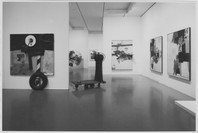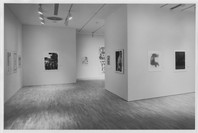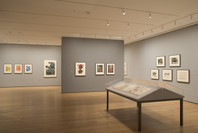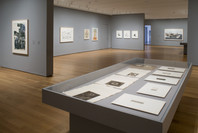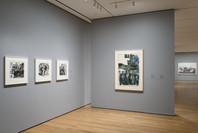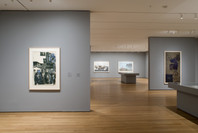Rauschenberg enjoys the chance occurrences that take place in artmaking. During work on this print, one of his largest to date, the lithographic stone broke. He embraced the unexpected event, incorporating it into the work as a diagonal white line bisecting the composition.
Gallery label from Artistic Collaborations: 50 Years at Universal Limited Art Editions, January 17–May 21, 2007.
Embracing the spirit of artistic collaboration that is typically involved in printmaking, Rauschenberg began making lithographs at the celebrated print workshop Universal Limited Art Editions, on Long Island, New York, in 1962. There he developed an inventive approach to the medium, using a solvent technique to dissolve and transfer photographic images from newspapers and magazines onto his lithographic printing surfaces. This process allowed him to freely combine fragments of images from a variety of sources. Here, for example, he merged found images (Diego Velázquez’s painting The Toilet of Venus [1647–51], the Statue of Liberty, and an eye chart, among others) with his own gestural marks. In the title, breakthrough refers to the crack that developed in the lithographic stone during the course of printing, which is visible here as a diagonal white line. It was an accident that, characteristically, Rauschenberg celebrated.
Gallery label from 2008.

